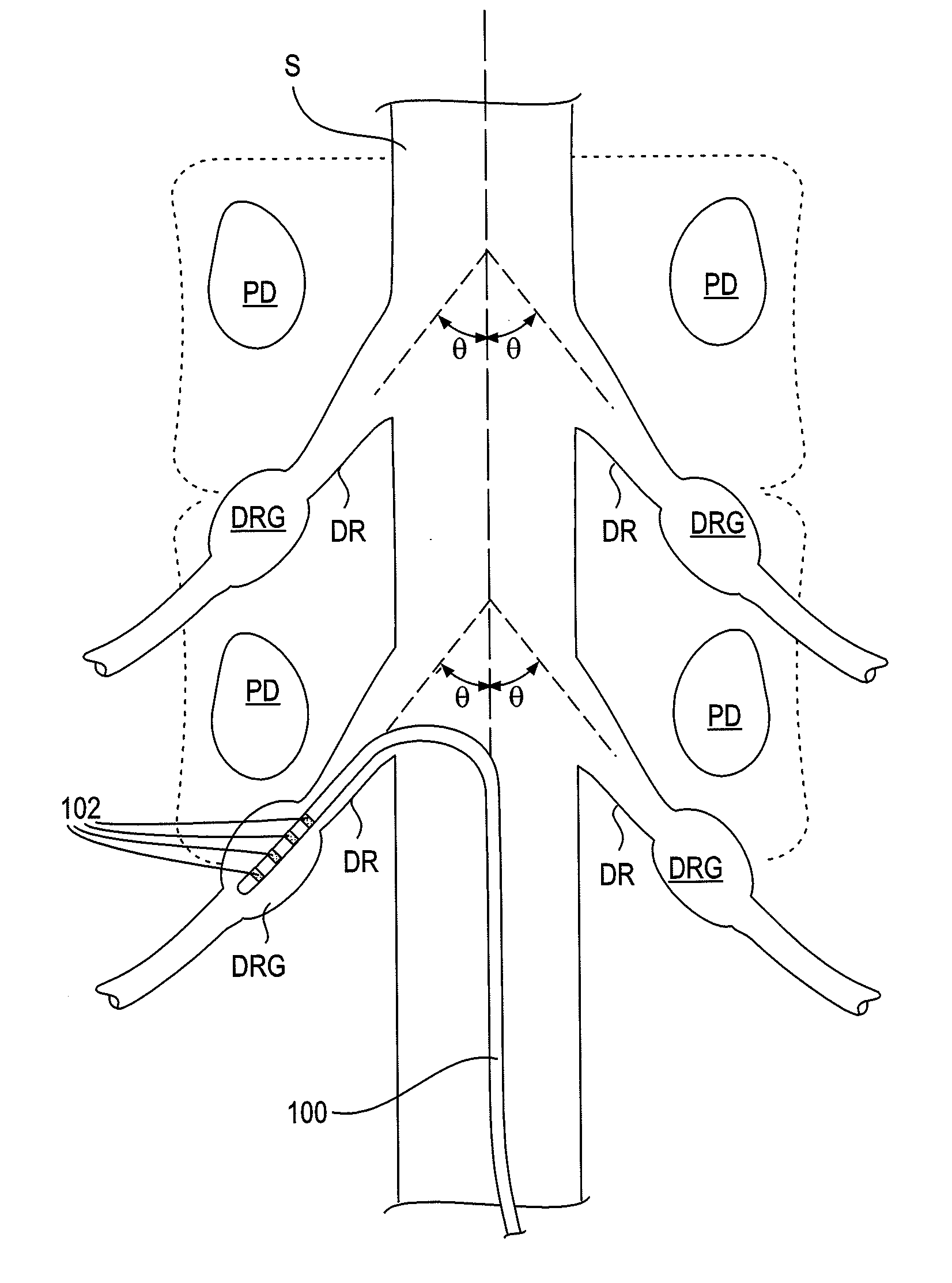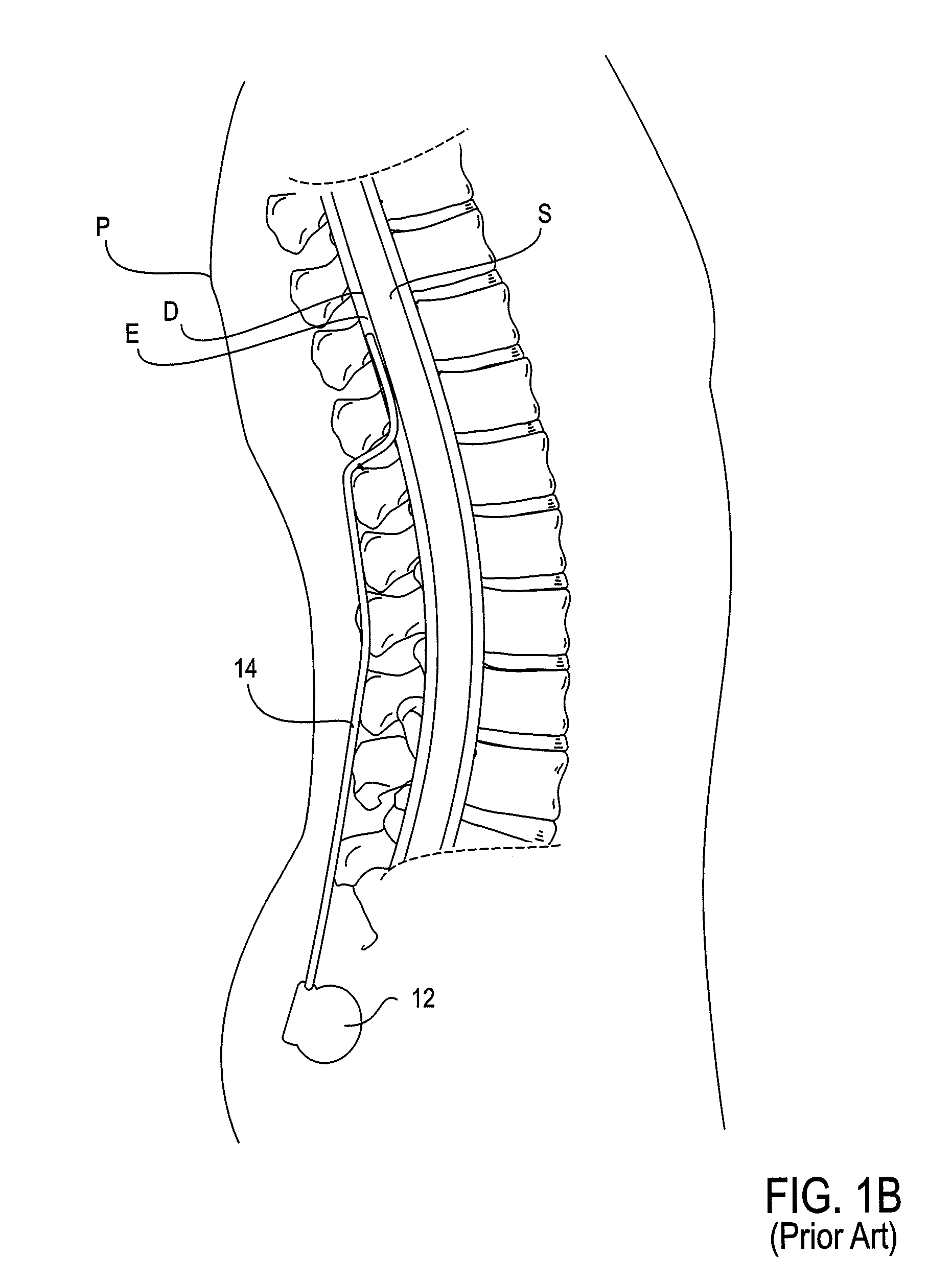Stimulation leads, delivery systems and methods of use
a technology of stimulation leads and delivery systems, applied in the field of stimulation leads, can solve problems such as insufficient stimulation, and achieve the effects of minimizing possible complications and side effects, minimizing or excluding undesired neuromodulation, and minimizing or excluding unwanted side effects
- Summary
- Abstract
- Description
- Claims
- Application Information
AI Technical Summary
Benefits of technology
Problems solved by technology
Method used
Image
Examples
Embodiment Construction
[0059]The present invention provides devices, systems and methods for accessing and treating anatomies associated with a variety of conditions, particularly conditions that are associated with or influenced by the nervous system. Examples of such conditions include pain, itching, Parkinson's Disease, Multiple Sclerosis, demylenating movement disorders, spinal cord injury, asthma, chronic heart failure, obesity and stroke (particularly acute ischemia), to name a few. Typically, the systems and devices are used to stimulate portions of neural tissue of the central nervous system, wherein the central nervous system includes the spinal cord and the pairs of nerves along the spinal cord which are known as spinal nerves. The spinal nerves include both dorsal and ventral roots which fuse in the intravertebral foramen to create a mixed nerve which is part of the peripheral nervous system. At least one dorsal root ganglion (DRG) is disposed along each dorsal root prior to the point of mixing...
PUM
 Login to View More
Login to View More Abstract
Description
Claims
Application Information
 Login to View More
Login to View More - R&D
- Intellectual Property
- Life Sciences
- Materials
- Tech Scout
- Unparalleled Data Quality
- Higher Quality Content
- 60% Fewer Hallucinations
Browse by: Latest US Patents, China's latest patents, Technical Efficacy Thesaurus, Application Domain, Technology Topic, Popular Technical Reports.
© 2025 PatSnap. All rights reserved.Legal|Privacy policy|Modern Slavery Act Transparency Statement|Sitemap|About US| Contact US: help@patsnap.com



